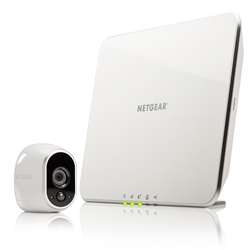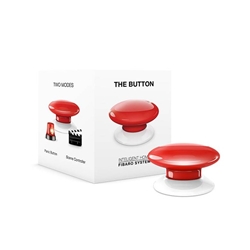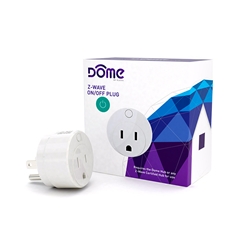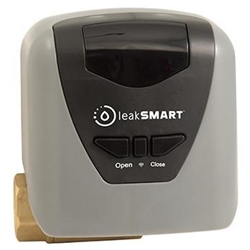 From regulating the temperature and locking your doors to programming your lighting and monitoring security cameras, home automation lets you control countless functions in your home with the press of a button. However, for the smart products in your home to work smoothly, they have to speak the same language. This language is known as a communication protocol. Simply put, it’s how signals are sent from one device to another to trigger an action such as turning your lights on or off.
From regulating the temperature and locking your doors to programming your lighting and monitoring security cameras, home automation lets you control countless functions in your home with the press of a button. However, for the smart products in your home to work smoothly, they have to speak the same language. This language is known as a communication protocol. Simply put, it’s how signals are sent from one device to another to trigger an action such as turning your lights on or off.
When you’re creating a fully connected smart home, its important to realize that there is no standard communication protocol for all smart home devices. Different devices use different protocols, each of which has its advantages and drawbacks. So it’s essential to consider how your devices are going to connect before you start purchasing products.
To help get you started, we’ve summarized the pros and cons of the three most common communication protocols found in todays smart homes: Wi-Fi, Z-Wave and Zigbee.
Wi-Fi
Connectivity is something that we’ve all become so used to having, and we have Wi-Fi to thank for that. It provides fast and dependable network connectivity using radio frequencies, allowing us to stream Netflix, check Facebook and sit in the coffee shop with our laptops.
Wi-Fi operates on either a 2.4 GHz frequency or a 5 GHz frequency and uses a router to create a local network connect for your smart home devices to communicate with one another. With a home Wi-Fi network, you can easily access and control your products via a smart phone or tablet, or use voice control via Siri, Alexa or the Google Assistant. Wi-Fi is a whole home network, and it is constantly improving with each generation.
PROS:
- Availability: Most people already have a Wi-Fi network setup and the technology is constantly improving.
- No Hub Needed: Wi-Fi devices communicate directly with your router, eliminating the need for an extra smart home hub.
- Cost: There is a wide range of Wi-Fi enabled smart devices on the market and they tend to be significantly less expensive than their counterparts. Depending on the number of devices you connect, you may want to upgrade your home Wi-Fi network.

CONS:
- Router Quality: The more devices you connect, more important the quality of your router becomes. If your internet provider sets you up with a low-quality router, you may need to pay more to upgrade.
- Power Consumption: Wi-Fi is notoriously power-hungry. Without a constant power supply, your battery-operated smart home devices are likely to require frequent recharging or stronger batteries.
- Interference Issues: This is arguably the biggest drawback of Wi-Fi in smart homes. Devices running on the 2.4GHz frequency often interfere with one another, and the more devices you connect the greater the interference. This results in sapped batteries and reduced response times.
MUST-HAVE PRODUCT:
The 100% wireless Arlo Security System comes with an Internet hub and HD smart home security camera to capture clips inside and out and send alerts whether you’re at home or away. The Arlo camera is weatherproof and includes motion detection, night vision and free apps for round-the-clock peace of mind.
Z-Wave
Z-Wave is a Wi-Fi alternative that uses low-energy radio waves to help devices and appliances in your smart home communicate. Designed for both commercial and residential smart buildings, Z-Wave is a mesh network that uses a central hub connected to the internet. The communication signal can be shared between devices without a Wi-Fi connection, jumping from device to device until it reaches the hub.
PROS:
- Range: Z-Wave’s mesh network connection is spread out over up to 232 touch points or nodes (devices), so the more nodes you add, the stronger and larger your connection becomes.
- Frequency: Z-Wave operates on a different on a radio frequency wave than Wi-Fi and Zigbee, so you can add as many devices to the network as you like without loss of speed or interference.
- Power Consumption: Z-Wave’s low-power technology means batteries will last far longer in low-voltage applications.
CONS:
- Hub Required: You will need a hub for your devices to communicate.
- Compatibility: While all certified Z-Wave smart home products will communicate with each other, they lack the compatibility of their Wi-Fi counterparts which can make integration challenging.
- Price: Z-Wave costs more than Zigbee and is significantly more expensive than Wi-Fi.

MUST-HAVE PRODUCTS:
- Turn off the lights, lock the doors and set the alarm with the push of a button! The Button Z-Wave Scene Controllerfrom Fibaro allows you to activate or deactivate up to five devices within your Z-Wave network. Wireless and battery-powered, it can be installed anywhere in your home.
- The Dome Z-Wave Smart On/Off Outlet plugs into a standard 3-prong power outlet and lets you turn on or off any connected electronic device. It also monitors how much energy the attached device uses and reports the data to your Z-Wave Hub.
Zigbee
Zigbee is also a wireless mesh network which allows your connected devices to talk to each other. However, unlike Z-Wave, there is no limit to the amount of signal jumps between devices. This makes Zigbee a super-flexible option, especially in more connected smart homes.
PROS:
- Scalability: Because it can handle up to 65,000 nodes or devices, Zigbee™s scalability is unparalleled. The large selection of compatible products includes major brands such as Philips and Samsung and premium devices like Amazon Echo Plus.
- Power Consumption: Zigbee uses even less power than Z-Wave, so batteries last longer.
CONS:
- Range: Zigbee’s range is a third of Z-Wave’s range, which means you’ll need your devices to be a bit closer together.
- Hub Required
- Security: Zigbee is not as secure as a Z-Wave or Wi-Fi-based system. It does not require active confirmation in order for a device to be paired, which leaves it vulnerable.
- Interference Issues: Zigbee runs on the same 2.4GHz frequency as Wi-Fi and Bluetooth. So, the more devices you add, the greater the likelihood of interference.
- Compatibility: Zigbee devices that use different protocols don’t necessarily “talk” to each other.

MUST-HAVE PRODUCT:
Paired with purchased sensors and a smart hub using the Zigbee wireless protocol, the leakSMART Automatic Shut-Off Valve’s patented ball valve shuts off your home’s main water supply when a leak is detected. It is compatible with multiple Smart Home system platforms, including Nest and Wink, giving you the flexibility to easily add leakSMART to your current network.
Which Smart Option is Best for You?
While each option has its pluses and minuses, the answer depends on your smart home setup, the number of devices you want, the brands you prefer, and what kind of control you want. For example:
- Wi-Fi is accessible, requires no additional hardware, and the range of compatible smart home products will continue to expand.
- Zigbee and Z-Wave are great for hosting multiple devices without the issues that result from over-crowding your Wi-Fi connection.
- Zigbee supports more devices in your home in the tens of thousands while Z-Wave is limited to a couple hundred. But the number of devices may be less important than the specific brands you are interested in.
Keep in mind that wireless communication between smart home devices can be difficult when they operate on different wireless communication protocols. Z-wave and Zigbee require hubs, and they are only receptive to their own products. Integrating other smart home devices that aren’t Zigbee or Z-Wave compatible can be difficult, as they require additional pieces of hardware for them to communicate with each other and other devices.
That said, it is possible to use both Zigbee and Z-Wave devices in your smart home. Many devices will work with both protocols, even if they don’t communicate directly, and some hubs such as Samsung’s SmartThings work with both Zigbee and Z-Wave products.
There’s no right or wrong here. The key is to do your research. Check out all of our Home Automation options or ask the experts at DIYcontrols.com to help you make your dream smart home a reality.



